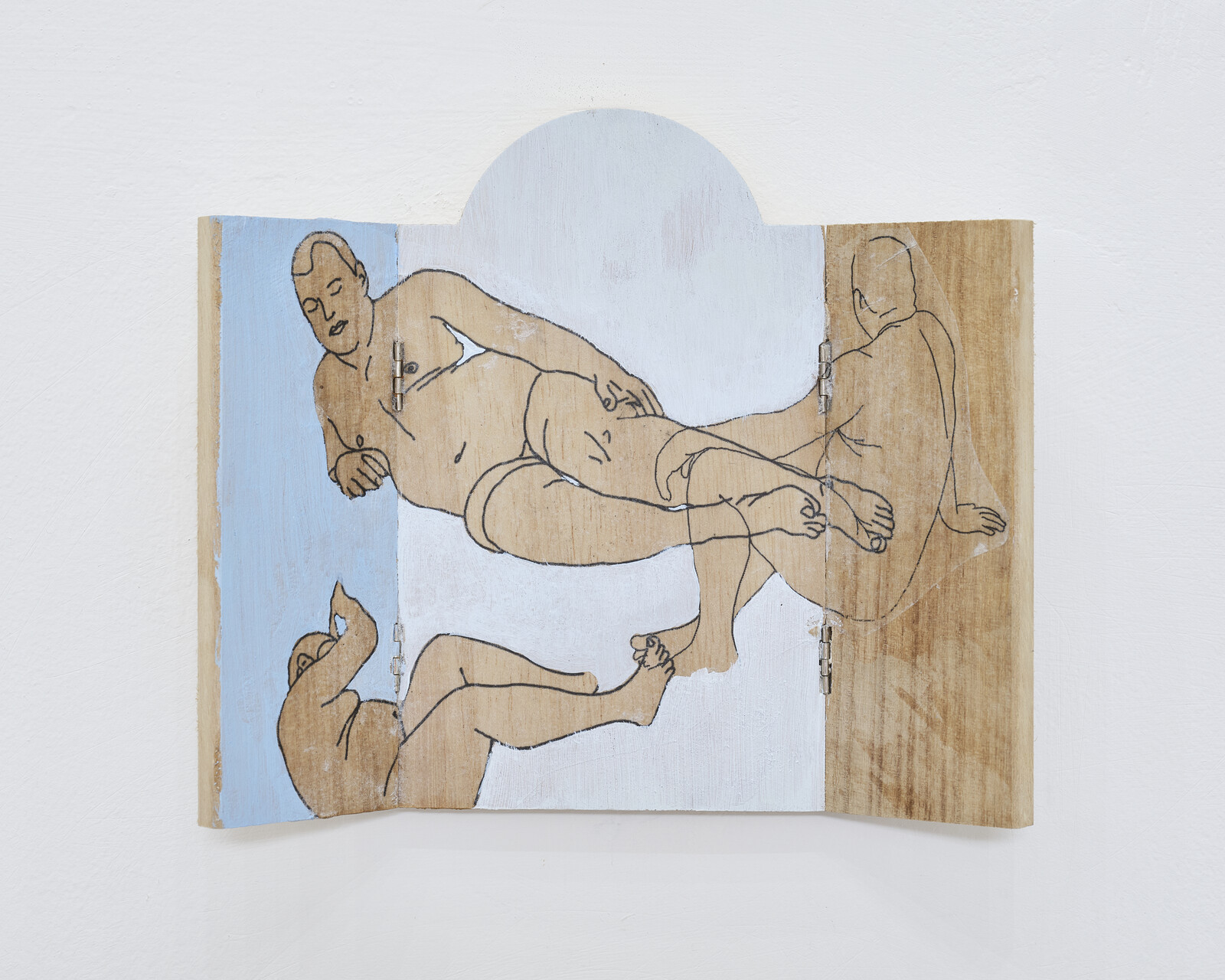Art, faith and transcendence
March 29–July 7, 2024
University College Cork
Cork
Ireland
Hours: Tuesday–Sunday 11am–5pm
T +353 21 490 1844
info@glucksman.org
Artists: Jonathas de Andrade, Shirazeh Houshiary, Austin Hearne, Samir Mahmood, Ana Mendieta, Grace Ndiritu, Hermann Nitsch, Jennifer Tee.
Curated by Chris Clarke.
Mysterious Ways explores the ways in which ritual and religion inform contemporary artistic practices. Through performative ceremonies, totemic objects, and meditative environments, such works invite viewers to transcend the everyday, to experience art as a moment of spiritual awakening. Featuring works by Irish and international artists, Mysterious Ways reveals how art and belief continually respond and reflect upon one another.
The exhibition initiates viewers with a “leap of faith.” Jonathas de Andrade’s film O Peixe resembles an anthropological documentary of village fishermen in Northeast Brazil gently whispering to dying fish, a respectful ceremonial custom that has, nevertheless, been staged by the artist. As in religious ritual, the belief in contemporary art can mark a moment of critical submission. A similarly contemplative spirit is found in Shirazeh Houshiary’s series Resonance, which employs forms determined by logical rules and the numerical and geometrical symbolism of Sufi cosmology. Houshiary’s world view is deeply informed by Sufism, the esoteric and mystical tradition of the Islamic faith, and these canvases are inscribed with minute Arabic script. Arabic words are painstakingly inscribed onto each canvas, repeated many times, spinning out into geometric shapes and woven so closely together that they become illegible. Samir Mahmood’s work specifically questions whether aesthetic experience is relatable to the spiritual encounter, while infusing traditional Sufi and Christian symbology with a queer sensibility. In his Indo-Persian miniature style works, age-old methods are combined with the presence of a naked male body, an act of disobedience against its patriarchal origins.
Hermann Nitsch was a pioneer of Vienna’s avant-garde scene in the 1960s and 70s, staging radical and controversial performances as part of the Viennese Actionism movement. The artist’s work in performance and painting, which included blood, flesh, and other materials, itself became a kind of religious practice. His canvases often incorporated splatters and splashes of oil or acrylic, sometimes mixed with blood, producing visceral and evocative abstractions through a highly physical and gestural process. Jennifer Tee’s work across diverse media—sculpture, performance, installation, printmaking—explore the notion of “the soul in limbo,” the liminal state between reality and idealism, perpetually on the cusp of transcendence. Her dense, yet intricate, works encourage the contemplation of life’s fragile connections, evoking spiritual realms with active material experimentation. In six sequential photographs of burning embers and white smoke erupting from the void of a human-shaped outline dug into packed earth, Ana Mendieta’s Volcán captures the artist’s engagement with nature and the body. As part of her poetic Siluetas series, created in Mexico between 1973 and 1981, these works involve silhouettes cut, burnt or drawn onto the landscape, imprinting her body upon nature itself.
Concerns around the occupation of Ireland by the Roman Catholic Church are at the heart of Austin Hearne’s practice. Playing with fact and fiction, Hearne creates worlds, characters and scenarios to satirise, demonise and embellish his subject matter. Alongside his perfomative works, he deploys elements borrowed from the painting and decorating industry to make interiors with photographic objects and furniture. In 2012, Grace Ndiritu began creating a new body of work under the title Healing The Museum, which sets out to re-introduce non-rational healing methodologies to re-activate the “sacredness” of art spaces. Ndiritu’s performances focus on ideas of lineage and legacy, and, in re-presenting the work as a film installation, she invites visitors to gather on a specially designed carpet to feel this transformative energy.
Mysterious Ways is is supported by The Arts Council Ireland, University College Cork and private philanthropy through Cork University Foundation.

